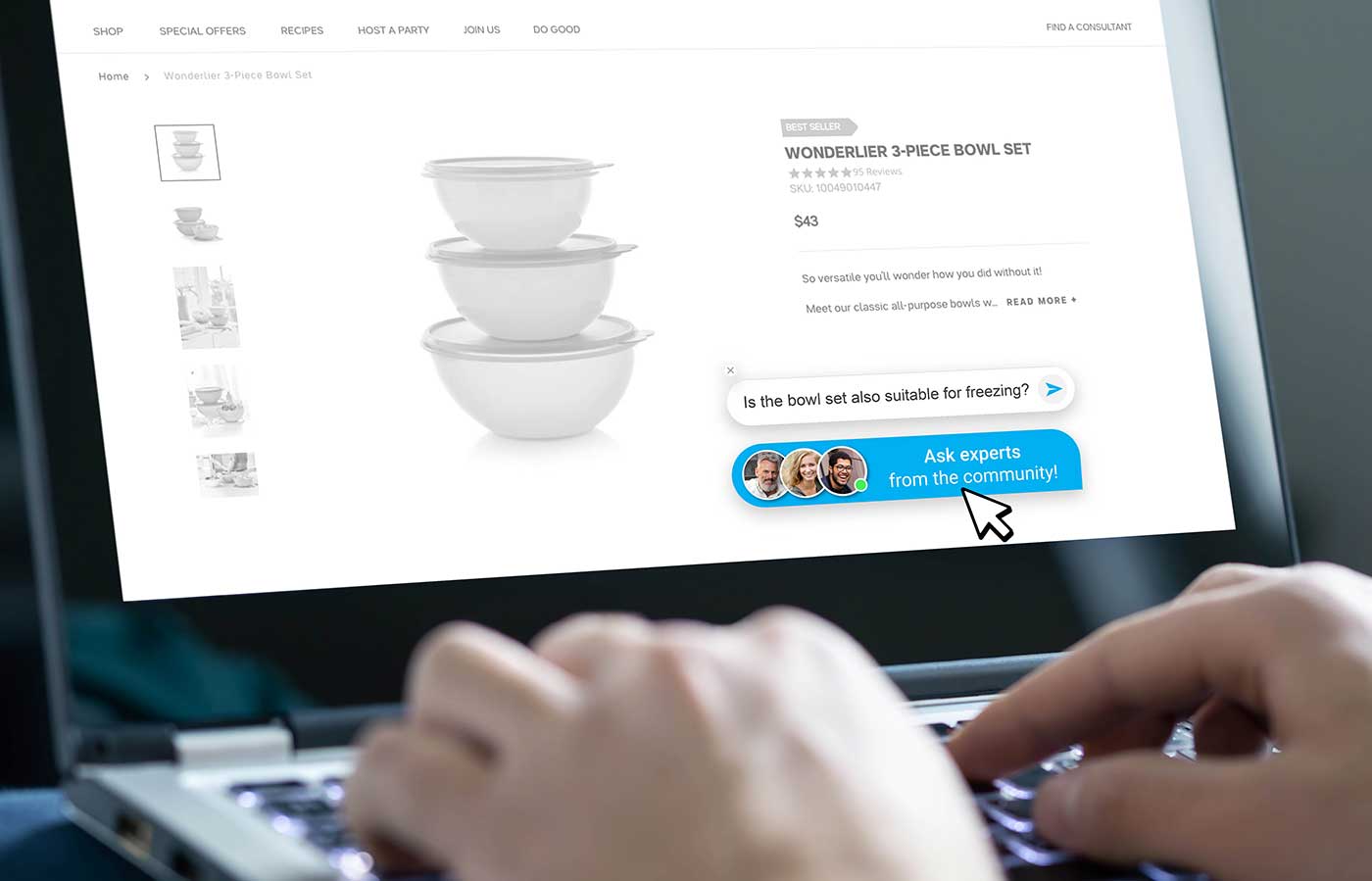
By Jutta Stienen -
How Community Conversational Commerce drives shoppers’ intent
Conversational commerce defines a new era in online selling. What would happen if your community of product experts – your customers and your fans – drove these conversion-boosting conversations as opposed to an internal team?
As conversational commerce – sales driven through digital conversations – becomes increasingly common, we reflect on the conversations between consumers that are often overlooked and how (and why) to change that.
The lucrative art of conversation
Industry leaders, like Google and Meta, believe both the convenience of messaging technology and the consumer’s increasing eagerness to reach out to brands make conversational commerce a very promising form of commerce.
“It’s not news that people love messaging each other, but we’re increasingly seeing that they want to message the businesses that they search for, that they shop with and visit, too,” explains Bart Jenniches, Google’s director of Business Communications.
“Knowing whether stores are open, buying online and scheduling a pickup, inquiring about a product or simply asking for help from the experts as they move from consideration to intent.”
By 2025, an estimated $290B will be spent on c-commerce. That’s an estimated increase of over 700% from $41B in 2021, according to Statista.
What is conversational commerce?
Conversational commerce, also known as chat commerce or c-commerce, is commerce that’s driven through digital conversational tools. These include tools used on your eStore – like a Live Chat or a Chatbot – or social channels like WhatsApp, Facebook Messenger and Instagram Direct Messaging.
The challenge with current c-commerce
Consider this: right before checkout, most consumers have a lingering bit of doubt, “is this product right for me?”.
To soothe that uncertainty, most (82% of consumers) proactively seek out peer referrals. They find these referrals via customer reviews, tutorial and review videos or product discussions on social media.

Typically these referrals aren’t accessible on eStores, which means in order to get peer confirmation, customers first click away from eStores, away from the products they were close to buying. While customer reviews can be accessed within a product page, they’re often static and don’t necessarily correspond to the lingering questions the customer aims to answer through peer content.
At the end of the day, moving customers from uncertainty to intent requires both social proof and instant support.
“The effectiveness of c-commerce is driven largely by execution; consumers expect businesses to answer quickly and provide useful responses,” explains Meta, who commissioned the Boston Consulting Group (BCG) to study almost 8000 shoppers who placed orders via online chat tools.
So how do you focus on instant c-commerce and social proof? That’s where community conversational commerce comes in.
Community conversational commerce: instant, authentic advice
Every brand has an existing community of independent experts who already have lively discussions about the products they use and love. Yet, conversational commerce overlooks these consumer-to-consumer discussions already happening in digital spaces.
These experts are the consumers religiously using your products. Many of them are already talking about your products, sharing their experiences with other consumers, online.
By combining this resource with AI you can facilitate and automate the connection between your online shoppers and your community of experts. AI in combination with community makes it possible to connect shoppers with real consumers in real-time.
What is community conversational commerce?
If c-commerce leans into messages exchanged between customers and businesses, community-driven c-commerce leans into messages exchanged between consumers about your products and your brand. These consumers are independent experts on your products. They can be existing customers, fans or brand advocates.
This means, when a consumer has a question, a product expert has the opportunity to respond to that question, sharing their first-hand experience. By offering shoppers access to these consumer-to-consumer exchanges on your eStore, you not only keep them on-page as they’re getting the confirmation they need before buying, you also let them get independent advice, which is considered trustworthy.
An example of community c-commerce
How online shopper, Emma, gets help from another experienced consumer, Ari. Emma wants to buy a lounge wear set, but before she’ll feel confident to click ‘checkout’ she has the need to make sure the item’s fit meets her requirements.
Emma can’t find the information she needs on the eStore. But by connecting with another consumer called Ari – an experienced fan of this brand – she can get the answer she needs within seconds, proceeding with her purchase equally as fast.
By enabling live digital conversations with your existing community of product experts, you can confirm and guide shoppers’ buying decisions and consistently improve eStore conversion rates.
Where does 'community conversational commerce' come from?
The future of effective chat commerce is community-driven conversations on your eStore, because of its potential to convert doubtful shoppers into confident, decisive buyers.
Follow us on:

